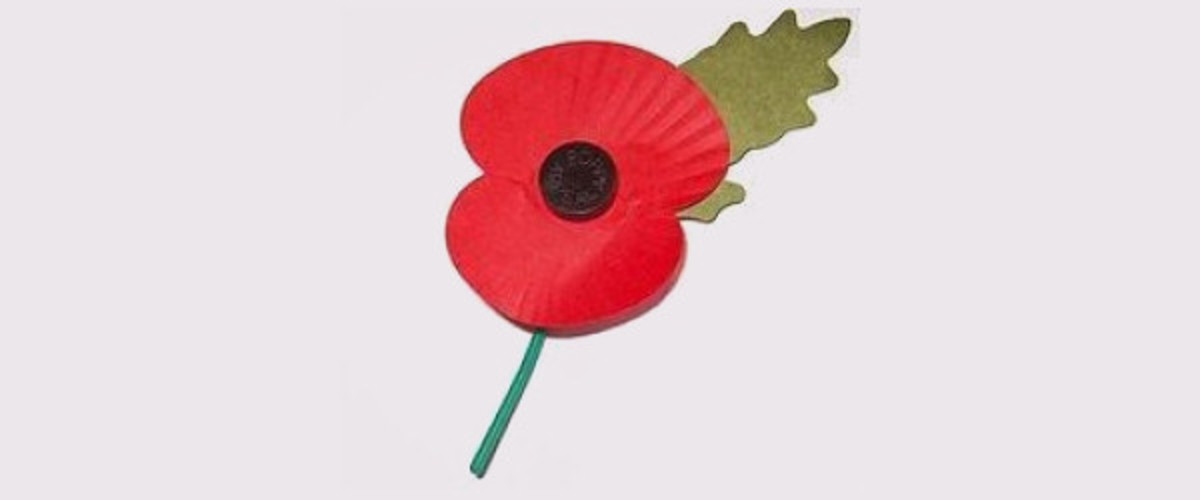

The story of these comes from the Western Front of World War I, where the poppy managed to. This is the poppy, the Commonwealth symbol of remembrance for the war dead.
#Remembrance poppy wiki tv#
If you're watching British, Canadian, New Zealand or Australian TV programmes of the live variety in late October and early November, expect to see people wearing fake red flowers. The newly formed British Legion sold nine million of the poppies on November 11 of that year, raising more than 106,000 British pounds. Not at all the same as Tall Poppy Syndrome. ULTRAS ENGLAND PIN BA Spurs Tottenham Hotspurs Poppy Badge Yid Army Casuals Ultras Remembrance Spurs Yid. The poppy emblem was chosen because of the poppies that bloomed across some of the worst battlefields of Flanders in World War I, their red colour an appropriate symbol for the bloodshed of trench warfare. Da Wikiquote, aforismi e citazioni in libert. Soon after, Guérin made red silk poppies and sold them in Britain to raise money for the Earl Haig Fund in support of former soldiers and the families of those who died during the war. The poppy's significance to Remembrance Day is a result of Canadian military physician John McCrae's poem In Flanders Fields. The Remembrance Day symbolism of the poppy started with a poem written by a World War I brigade surgeon who was struck by the sight of the red flowers growing on a ravaged battlefield. In 1920, Anna Guérin, a French woman, was inspired by Michael’s idea to make poppies a memorial flower. Inspired by McCrae’s poem, Michael wrote her own called, “We Shall Keep the Faith,” in which she vows to wear the poppy to remember the war dead: “And now the torch and poppy red, we wear in honor of our dead.” Servicemen would go there to say goodbye to family and friends before heading overseas. Two days before the Armistice, American humanitarian and academic Moina Michael read McCrae’s poem while on duty at the YMCA Overseas War Secretaries headquarters in New York. Canada's History Youth Committee Members.Red represents soldiers and purple represents all of the animals that died. The John Bragg Award for Atlantic Canada There are lots of different coloured poppies, red, purple white and black.4 It is also used at some other dates in some countries, such as at appeals for Anzac Day in Australia and New Zealand. Historical Thinking Community of Practice During the 20th century, the wearing of a poppy at and before Remembrance Day (sometimes known informally as Poppy Day) each year became an established custom in English-speaking western countries.Chosen by The Royal Canadian Legion, the annual honoree places a wreath at the base of the National War Memorial at the National Remembrance Day Ceremony.Ħ) Remembrance Day is a statutory holiday in most Canadian provinces, except Nova Scotia, Manitoba, Ontario and Quebec.ħ) At 11 a.m., on the 11 th day of the 11 th month, Canadians stop what they’re doing for a moment of silence.Ĩ) Members of the Canadian military have seen combat in both World Wars, the Korean War, the South African War, the Arab-Israeli Conflict in 1974, and in Afghanistan, among other battles. Money raised from the “Poppy Campaign” provides assistance for military veterans in need.ģ) The poppy tradition began when the noticeable red flower was seen growing over the graves of soldiers.Ĥ) Led by the Governor General, the National Remembrance Day Ceremony is held at the National War Memorial in Ottawa and is broadcast nationally.ĥ) The National (Silver) Cross Mother represents all mothers whose sons or daughters died while on active duty. The poppies are also worn at memorial events throughout the year, such as anniversaries of important battles. From the acclaimed academic programs and state-of-the-art facilities to MTSU campus life and our thriving Blue Raider athletic programs, there are thousands of.


Brush up on your history and find out more about this important holiday with these 10 facts about Remembrance Day.ġ) Remembrance Day was initially called “Armistice Day” and it originated to commemorate the end of World War I on November 11, 1918.Ģ) Poppies are worn during a remembrance period that runs from the last Friday in October till November 11. On November 11, Remembrance Day, Canadians everywhere will don their poppies and proudly fly the Maple Leaf as they remember the many men and women who have served, and continue to serve, their country.


 0 kommentar(er)
0 kommentar(er)
